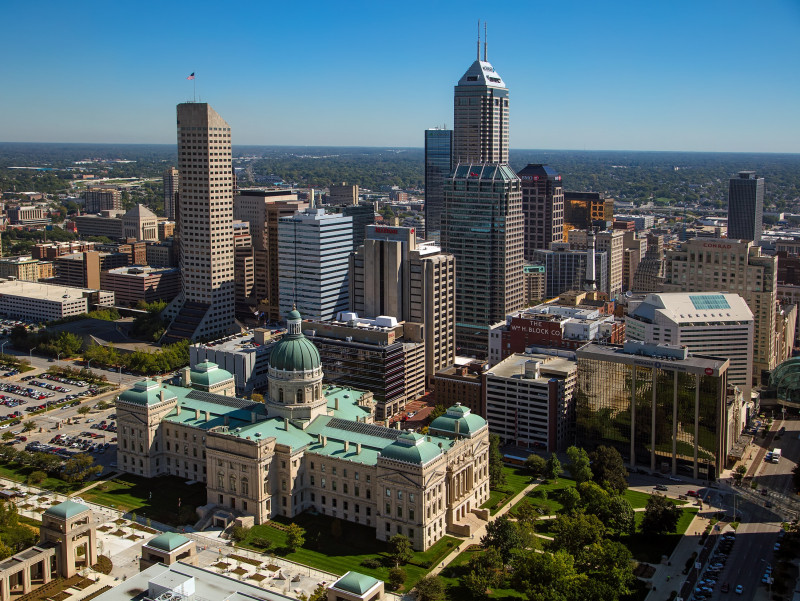Indianapolis, or Indy, is the capital and most populous city of Indiana, also serving as the county seat of Marion County. Located in the central till plain along the White River's west fork, its slogan, "Crossroads of America", highlights its historical significance as a transportation center and its central location to major North American markets.
May 15, 1902: Soldiers' and Sailors' Monument Dedicated
On May 15, 1902, the Soldiers' and Sailors' Monument was dedicated and would later become the city's unofficial symbol.
1902: Herron School of Art and Design Established
Established in 1902, the Herron School of Art and Design's first core faculty included Impressionist painters belonging to the Hoosier Group.
1902: Height restriction laws enacted
Following the dedication of the Soldiers' and Sailors' Monument in 1902, Indianapolis enacted its first height restriction laws to protect views of the monument.
1902: Indianapolis Indians Established
In 1902, the Indianapolis Indians were established, becoming one of the oldest teams in Minor League Baseball.
1902: Soldiers' and Sailors' Monument construction
In 1902, the Soldiers' and Sailors' Monument was built using Indiana limestone.
1902: Ringling Brothers Parade Film
The Ringling Brothers Parade Film was filmed in 1902.
1905: Birch Bayh Federal Building construction
In 1905, the Birch Bayh Federal Building and United States Courthouse was built using Indiana limestone.
1906: U.S. Army Operates Fort Benjamin Harrison
In 1906, the U.S. Army began operating Fort Benjamin Harrison in neighboring Lawrence.
1907: Saints Peter and Paul Cathedral construction
In 1907, Saints Peter and Paul Cathedral was built using Indiana limestone.
1909: Indianapolis Park and Boulevard Plan
In 1909, George Kessler's Indianapolis Park and Boulevard Plan linked notable parks with a system of parkways following the city's waterways.
1909: Indianapolis Masonic Temple construction
In 1909, the Indianapolis Masonic Temple was built using Indiana limestone.
1909: Indianapolis Motor Speedway Completed
In 1909, the Indianapolis Motor Speedway was completed as an automotive test track.
1910: Madam C. J. Walker Manufacturing Company Founded
In 1910, Madam C. J. Walker Manufacturing Company was founded.
1910: Old Indianapolis City Hall construction
In 1910, Old Indianapolis City Hall was built using Indiana limestone.
1910: Opening of Old National Centre
In 1910, the Old National Centre, the oldest stagehouse in Indianapolis, opened in the Mass Ave Cultural Arts District.
May 30, 1911: Inaugural Indianapolis 500
On May 30, 1911, Ray Harroun won the inaugural running of the Indianapolis 500 at Indianapolis Motor Speedway.
1911: First Indianapolis 500
In 1911, the 2.5-mile-long rectangular oval hosted the first Indianapolis 500, an open-wheel automobile race.
1913: Great Flood
In 1913, Indianapolis was one of the hardest hit cities in the Great Flood, resulting in five known deaths and the displacement of 7,000 families.
1913: Indianapolis streetcar strike
In 1913, the Indianapolis streetcar strike, subsequent police mutiny and riots led to the creation of the state's earliest labor-protection laws.
1914: Ford Motor Company operations
Ford Motor Company operated in Indianapolis from 1914–1942, 1956–2008.
1915: Allison Transmission Founded
In 1915, Allison Transmission was founded.
1915: Establishment of Allison Engine Company
Rolls-Royce North America dates its local presence to the establishment of the Allison Engine Company in 1915.
1920: End of Golden Age of Indiana Literature
Around 1920, the Golden Age of Indiana Literature ended. Indianapolis had been a hub for notable poets and writers who achieved national prominence during this period.
1921: Indiana Klan gaining power
From 1921, the Indiana Klan became the most powerful political and social organization in Indianapolis.
1925: Chrysler operations
Chrysler operated in Indianapolis from 1925–2005.
1927: Madam Walker Legacy Center Opened
In 1927, the Madam Walker Legacy Center opened on Indiana Avenue. The building's theater hosted vaudeville shows and anchored the Indiana Avenue jazz scene from the 1920s through the 1960s.
1927: Scottish Rite Cathedral construction
In 1927, the Scottish Rite Cathedral was built using Indiana limestone.
1928: Hinkle Fieldhouse Opened
In 1928, Hinkle Fieldhouse opened as the world's largest basketball arena.
1928: End of Indiana Klan control
Until 1928, the Indiana Klan controlled the City Council and the Board of School Commissioners, among others.
1929: Speedway Filmed
In 1929, the motion picture "Speedway" was filmed at the Indianapolis Motor Speedway.
1930: General Motors operations
General Motors operated in Indianapolis from 1930–2011.
1934: Indiana State Library construction
In 1934, the Indiana State Library and Historical Bureau was built using Indiana limestone.
July 14, 1936: Record High Temperature
On July 14, 1936, Indianapolis recorded its official record high temperature of 106 °F (41 °C).
1942: Ford Motor Company operations
Ford Motor Company operated in Indianapolis from 1914–1942, 1956–2008.
1947: Area Code 317 Established
In 1947, area code 317 was established as the original area code for the Indianapolis area.
1948: James Baskett Receives Honorary Academy Award
In 1948, James Baskett received an Academy Honorary Award for his role in Walt Disney's Song of the South, becoming the first Black male Oscar recipient.
1949: Sid Grauman Receives Honorary Academy Award
In 1949, Sid Grauman, a founder of the Academy of Motion Picture Arts and Sciences, received an Academy Honorary Award for raising the standard for film exhibition.
1950: To Please a Lady Filmed
In 1950, the motion picture "To Please a Lady" was filmed at the Indianapolis Motor Speedway.
1950: Post-War Suburbanization
Starting in 1950, the post–World War II economic expansion and subsequent suburbanization greatly influenced the city's development patterns.
1956: Ford Motor Company operations
Ford Motor Company operated in Indianapolis from 1914–1942, 1956–2008.
1962: First high-rise surpassing monument height
In 1962, the City-County Building became the first high-rise in the city to surpass the monument’s height, reaching 372 feet.
1963: Clowes Memorial Hall construction
In 1963, Clowes Memorial Hall was built using Indiana limestone.
1963: John J. Barton's election
In 1963, John J. Barton was elected mayor.
1963: Riley Towers completion
In 1963, the twin 295-foot Riley Towers were completed, becoming the tallest residential buildings in Indianapolis.
1965: Indianapolis Times Ceases Publication
In 1965, the Indianapolis Times ceased publication.
1967: Republican Mayoral Control Begins
In 1967, Republicans began a 32-year hold on the mayor's office in Indianapolis.
1967: Indiana Pacers Founded
In 1967, the Indiana Pacers were founded and began in the American Basketball Association (ABA).
1968: Richard Lugar mayoral administration began
Richard Lugar's mayoral administration began in 1968.
1968: Robert F. Kennedy's speech
While campaigning in the city in 1968, Robert F. Kennedy delivered one of the most lauded speeches in 20th century American history, following the assassination of Martin Luther King Jr.
1969: Riots in Indianapolis
As in most U.S. cities during the civil rights movement, in 1969 Indianapolis experienced strained race relations, including riots.
1969: Winning Filmed
In 1969, the motion picture "Winning" was filmed at the Indianapolis Motor Speedway.
1969: U.S. Clay Court Championships
The U.S. Clay Court Championships were held in Indianapolis starting in 1969.
January 1, 1970: Unigov consolidation
Effective January 1, 1970, Unigov expanded the city's land area by more than 300 square miles and increased its population by some 250,000 people.
1970: Housing Construction
From 1950 to 1970, nearly 100,000 housing units were built in Marion County, most outside Center Township in suburban neighborhoods such as Castleton, Eagledale, and Nora.
1970: Consolidated City-County Government
In 1970, Indianapolis officially became the Consolidated City of Indianapolis and Marion County under Indiana Code's Unigov provision, consolidating many functions of municipal and county governments.
1970: Pacers win ABA Championship
In 1970, the Indiana Pacers, led by Mel Daniels, Roger Brown, and George McGinnis won an ABA championship.
1970: City-County Council Control
In 1970, the Republican party controlled the City-County Council.
1970: Unigov city-county consolidation
Since the 1970 city-county consolidation, known as Unigov, local government administration operates under the direction of an elected 25-member city-county council headed by the mayor.
1971: Desegregation Busing
In 1971, a federal court decision forced Indianapolis Public Schools to implement desegregation busing, which proved controversial.
1972: Pacers win ABA Championship
In 1972, the Indiana Pacers, led by Mel Daniels, Roger Brown, and George McGinnis won an ABA championship.
1973: Pacers win ABA Championship
In 1973, the Indiana Pacers, led by Mel Daniels, Roger Brown, and George McGinnis won an ABA championship.
1976: Pacers Join NBA
In 1976, the Indiana Pacers joined the National Basketball Association (NBA) when the leagues merged.
1976: End of Richard Lugar's mayoral administration
Richard Lugar's mayoral administration ended in 1976.
1976: William Hudnut mayoral administration began
William Hudnut's mayoral administration began in 1976.
1979: White River State Park Commission
Since 1979, White River has been owned and operated by the White River State Park Development Commission, a quasi-governmental agency. White River's 250 acres (100 ha) are home to several attractions, including the Indianapolis Zoo and White River Gardens.
1982: U.S. Olympic Festival
Indianapolis landed the U.S. Olympic Festival in 1982.
1982: National Sports Festival
The National Sports Festival was held in Indianapolis in 1982.
1983: WFBQ Airs The Bob & Tom Show
Since 1983, WFBQ has been the flagship station for the nationally syndicated radio program "The Bob & Tom Show".
1984: Colts Relocate to Indianapolis
In 1984, the Indianapolis Colts of the National Football League relocated from Baltimore to Indianapolis.
1984: Relocation of the Baltimore Colts
Indianapolis secured the relocation of the Baltimore Colts in 1984.
1985: Canal Redevelopment
Between 1985 and 2001, nearly 1.5 miles of the former Indiana Central canal in downtown Indianapolis were redeveloped into a cultural and recreational amenity.
1986: Vonnegut returns to Indianapolis
In 1986, Kurt Vonnegut returned to Indianapolis, acknowledging the significant influence the city had on his writings.
1986: Hoosiers Released
In 1986, the film "Hoosiers" was released, using the city's sports venues as backdrops.
1987: Pan American Games
Indianapolis hosted the 1987 Pan American Games.
1988: Eight Men Out Released
In 1988, the film "Eight Men Out" was released, using the city's sports venues as backdrops.
1988: Indianapolis Tennis Championships
The Indianapolis Tennis Championships were held in Indianapolis starting in 1988.
1990: Manufacturing Job Losses
Between 1990 and 2012, approximately 26,900 manufacturing jobs were lost in Indianapolis.
1990: Salesforce Tower completion
In 1990, the Salesforce Tower, completed in 1990, is the city’s tallest, with a roof height of 701 feet.
1991: Fort Benjamin Harrison Closes
In 1991, the U.S. Army ceased operations at Fort Benjamin Harrison in neighboring Lawrence.
1991: World Artistic Gymnastics Championships
The World Artistic Gymnastics Championships were held in Indianapolis in 1991.
1992: Stephen Goldsmith mayoral administration began
In 1992, the mayoral administration of Stephen Goldsmith introduced a number of austerity measures to address budget shortfalls through privatization and greater reliance on public–private partnerships.
1992: William Hudnut mayoral administration ended
William Hudnut's mayoral administration ended in 1992.
January 19, 1994: Record Low Temperature
On January 19, 1994, Indianapolis recorded its official record low temperature of −27 °F (−33 °C).
1994: World Rowing Championships
The World Rowing Championships were held in Indianapolis in 1994.
1996: Fort Harrison State Park Established
In 1996, Fort Harrison State Park was established. The park covers 1,744 acres (706 ha) that are overseen by the Indiana Department of Natural Resources.
1996: Victory Field Replaced Bush Stadium
In 1996, Victory Field replaced Bush Stadium as the home of the Indianapolis Indians.
1997: Going All the Way Filmed
In 1997, the motion picture "Going All the Way" was at least partially filmed in Indianapolis.
1998: Homicide Spike
In 1998, Indianapolis experienced a homicide spike, reaching 162 murders.
1999: Gainbridge Fieldhouse Replaces Market Square Arena
In 1999, Gainbridge Fieldhouse replaced Market Square Arena as the shared home of the Indiana Fever and Pacers.
1999: Indianapolis News Ceases Publication
In 1999, the Indianapolis News, an evening publication, printed its last edition.
1999: Republican Mayoral Control Ends
In 1999, the Republican's 32-year hold on the mayor's office ended.
2000: Increase in Foreign-Born Population
From 2000, the foreign-born population of Indianapolis increased by 131%.
2000: Bart Peterson took office
In 2000, Bart Peterson took office as mayor.
2000: Pacers Make NBA Finals Appearance
In 2000, led by Larry Bird and Reggie Miller, the Indiana Pacers made their first NBA Finals appearance.
2000: Indiana Fever Debut
In 2000, the Indiana Fever of the Women's National Basketball Association (WNBA) debuted.
2000: 2000 Presidential Election
In the 2000 United States presidential election, Marion County voters narrowly selected George W. Bush over Al Gore by a margin of 1.3%.
2000: Increased Reinvestment
Since the 2000s, downtown Indianapolis and surrounding neighborhoods have seen increased reinvestment mirroring nationwide market trends, driven by empty nesters and millennials.
2000: Indianapolis Indians Win Championship
The Indianapolis Indians won a championship in 2000.
2000: United States Grand Prix
The United States Grand Prix was held in Indianapolis starting in 2000.
2001: Canal Redevelopment
Between 1985 and 2001, nearly 1.5 miles of the former Indiana Central canal in downtown Indianapolis were redeveloped into a cultural and recreational amenity.
2001: Hoosiers Added to National Film Registry
In 2001, Hoosiers was added to the National Film Registry.
2001: Masjid Al Mu'mineen Established
In 2001, Masjid Al Mu'mineen was established in Indianapolis.
2001: Charter schools authorized
In 2001, the mayor's office became the first in the U.S. to authorize charter schools.
2001: World Police and Fire Games
The World Police and Fire Games were held in Indianapolis in 2001.
2003: Indianapolis Cultural Districts designated
In 2003, Indianapolis Cultural Districts were designated.
2003: National Register of Historic Places
In 2003, the Indianapolis Park and Boulevard Plan's 3,474 acres were added to the National Register of Historic Places.
2003: City-County Council Control Ends
In 2003, the Republican party lost control of the City-County Council.
2004: Palindromes and Saving Star Wars Filmed
In 2004, the motion pictures "Palindromes" and "Saving Star Wars" were at least partially filmed in Indianapolis.
2004: 2004 Presidential Election
In the 2004 United States presidential election, Marion County voters favored John Kerry over George W. Bush by a margin of 1.9%.
2005: Chrysler operations
Chrysler operated in Indianapolis from 1925–2005.
2005: Eskenazi Hall as Home to the School
Since 2005, Eskenazi Hall at IU Indianapolis has been home to the Herron School of Art and Design, hosting five public galleries and numerous programs throughout the year.
2006: Murder Spike
In 2006, Indianapolis experienced another spike with 153 murders.
2006: Hindu Temple of Central Indiana Established
In 2006, the Hindu Temple of Central Indiana was established.
2007: Indianapolis Metropolitan Police Department established
In 2007, further consolidation of city and county units of government resulted in the establishment of the Indianapolis Metropolitan Police Department.
2007: Colts Win Super Bowl XLI
In 2007, led by Tony Dungy and Peyton Manning, the Indianapolis Colts won Super Bowl XLI.
2007: Greg Ballard succeeded Peterson
Later in 2007, Greg Ballard succeeded Peterson in a political upset.
2007: American Community Survey Household Income
The U.S. Census Bureau's 2007–2011 American Community Survey indicated the median household income for Indianapolis city was $42,704.
2007: United States Grand Prix
The United States Grand Prix was held in Indianapolis ending in 2007.
2008: Ford Motor Company operations
Ford Motor Company operated in Indianapolis from 1914–1942, 1956–2008.
2008: Lucas Oil Stadium Replaces RCA Dome
In 2008, Lucas Oil Stadium replaced the RCA Dome as the home of the Indianapolis Colts.
2008: Chain Restaurants per Capita
In 2008, the Indianapolis metropolitan area had the highest concentration of chain restaurants per capita in the U.S.
2008: Capital projects completed
In 2008, two of the city's largest capital projects, the Indianapolis International Airport's new terminal and Lucas Oil Stadium, were completed.
2009: Amanda Filmed
In 2009, the motion picture "Amanda" was at least partially filmed in the city.
2009: Microbreweries Increase
Since 2009, Microbreweries have become a staple in the city, increasing fivefold.
2009: Indianapolis Tennis Championships
The Indianapolis Tennis Championships were held in Indianapolis ending in 2009.
2010: Median Age of Indianapolis Residents
In 2010, the median age for Indianapolis was 33.7 years.
2010: Household Data
The 2010 census reported 332,199 households in Indianapolis, with an average household size of 2.42 and an average family size of 3.08.
2011: Increase in Annual Homicide Numbers
From 2011 to 2019, there was a rise in annual homicide numbers.
2011: General Motors operations
General Motors operated in Indianapolis from 1930–2011.
2011: American Community Survey Poverty
The U.S. Census Bureau's 2007–2011 American Community Survey indicated that 18.9% of Indianapolis's total population lived below the poverty line.
2012: Manufacturing Job Losses
Between 1990 and 2012, approximately 26,900 manufacturing jobs were lost in Indianapolis.
2012: Publication of The Fault in Our Stars
In 2012, John Green published his critically acclaimed young adult novel, "The Fault in Our Stars", which is set in Indianapolis.
2012: St. Elmo wins America's Classics award
In 2012, St. Elmo Steak House was recognized with the America's Classics award by the James Beard Foundation.
2012: Tunnel system construction began
In 2012, construction began on a $2 billion tunnel system designed to reduce sewage overflows into the city's waterways.
2012: Fever Win First Championship
In 2012, led by Lin Dunn and Tamika Catchings, the Indiana Fever won their first WNBA championship title.
2014: Policy Preferences Research
In 2014, research published in the American Political Science Review indicated that Indianapolis's policy preferences are less conservative than the national mean compared to other large U.S. cities.
2015: Households Without a Car
In 2015, 10.5 percent of Indianapolis households lacked a car.
2015: Brookings Characterizes Indianapolis as Immigrant Gateway
In 2015, Brookings characterized the Indianapolis metropolitan area as a minor-emerging immigrant gateway with a foreign-born population of 126,767, which was 6.4% of the total population.
2015: IPS Contracts with Charter Organizations
In 2015, Indianapolis Public Schools (IPS) began contracting with charter organizations and nonprofit managers to operate failing schools.
2015: Record High Homicides
In 2015, Indianapolis surpassed 1998 as the year with the most murder investigations in the city, with 144 criminal homicides.
2015: Indianapolis Indiana Temple
In 2015, the Indianapolis Indiana Temple, located in Carmel, was opened. Also in 2015, the First Church of Cannabis was established.
2015: Walter Filmed
In 2015, the motion picture "Walter" was at least partially filmed in the city.
2016: Driving Commute Statistics
According to the 2016 American Community Survey, 83.7% of working residents in Indianapolis commuted by driving alone, and the city averaged 1.63 cars per household.
2016: Film Indy Established
Film Indy was established in 2016 to support local visual artists, filmmakers, and aspiring filmmakers, as well as recruit film and television-related marketing opportunities.
2016: Carrier Corporation Plant Closure Announcement
In 2016, Carrier Corporation announced the closure of its Indianapolis plant, moving 1,400 manufacturing jobs to Mexico.
2016: Indianapolis Named "Most Underrated Food City"
In 2016, Condé Nast Traveler named Indianapolis the "most underrated food city in the U.S.", also ranking Milktooth as one of the best restaurants in the world.
2016: Bioblitz Finds 590 Taxa
In 2016, a bioblitz along three of Indianapolis's riparian corridors found 590 taxa of wildlife.
2016: Area Code 463 Added
In 2016, area code 463 was added as an overlay code for the Indianapolis area, making ten-digit dialing mandatory.
2016: Religion Research
In 2016, the Public Religion Research Institute identified the largest groupings of Protestantism by faith tradition.
2016: NCAA Division I Women's Basketball Final Four
Indianapolis hosted the NCAA Division I women's basketball Final Four in 2016.
2016: Joe Hogsett administration began
Since 2016, the administration of Joe Hogsett has focused on addressing a rise in gun violence and the city's racial disparities.
2017: Household Income
In 2017, the North Meridian Street Historic District is among the most affluent urban neighborhoods in the U.S., with a mean household income of $102,599.
2018: Most Violent Year
In 2018, Indianapolis experienced its most violent year on record, with 159 criminal homicides.
2018: Electric Scooter-Sharing Systems Launched
In 2018, electric scooter-sharing systems, including Bird, Lime, and Veo, were launched in Indianapolis.
2018: Indy Shorts International Film Festival Founded
In 2018, the Indy Shorts International Film Festival was founded, becoming one of 34 film festivals in the world used to qualify for the Academy Awards.
2019: Indianapolis Mayoral and City-County Council Elections
In 2019, Democrat Joe Hogsett was elected to a second term as mayor of Indianapolis, and the City-County Council elections expanded Democratic control, resulting in a 20–5 supermajority over Republicans.
2019: NUVO Becomes Digital-Only
In 2019, NUVO, an alternative weekly publication, transitioned to a digital-only format.
2019: IndyGo Ridership
In 2019, pre-COVID-19 pandemic IndyGo ridership was 9.2 million.
2019: The MisEducation of Bindu Filmed
In 2019, the motion picture "The MisEducation of Bindu" was at least partially filmed in the city.
2019: Criminal Homicide Numbers
Until 2019, annual criminal homicide numbers had grown each year since 2011, reaching record highs from 2015 to 2018.
2020: Logistics Sector Employment
According to the Indy Chamber, in 2020 the Indianapolis region was home to some 4,300 establishments employing nearly 110,000 in the logistics sector.
2020: Indianapolis Census Population
At the 2020 census, Indianapolis had a population of 887,642 and a population density of 2,455 people per square mile (948/km).
2020: IndyGo Passenger Trips
In 2020, IndyGo's fleet of 212 buses provided about 4.8 million passenger trips.
2020: Community Farms and Gardens
In 2020, according to the city's Office of Sustainability, there were 129 community farms and gardens in Indianapolis.
2020: George Floyd protests in Indiana
In 2020, the George Floyd protests in Indiana prompted a series of local police reforms and renewed efforts to bolster social services for mental health treatment and homelessness.
2020: IMPD Personnel Numbers
In 2020, the Indianapolis Metropolitan Police Department (IMPD) had 1,700 sworn police personnel and 250 civilian employees across six districts.
2020: Indianapolis Metropolitan Area Population
In 2020, the Indianapolis metropolitan area's population was 2,111,040.
2020: LGBT Adult Population Estimate
In 2020, the Williams Institute reported that the Indianapolis metropolitan area had an estimated 4.6% LGBT adult population, totaling about 68,000.
2020: Athlete A Filmed
In 2020, the motion picture "Athlete A" was at least partially filmed in Indianapolis.
2020: 2020 Presidential Election
In the 2020 United States presidential election, Marion County voters selected Joe Biden over Donald Trump by a margin of 63.3–34.3%.
2020: Indianapolis population in 2020 Census
In the 2020 census, Indianapolis was among the 20 largest cities in the U.S. by both population and land area.
2020: Ganggang Supporter of Black Artists
Since 2020, Ganggang has been a prominent supporter of Black artists in the city. Their annual art fair "BUTTER" is a multi-day art exhibition that takes place over Labor Day weekend.
2020: Racial Demographics
Sometime between 2020 and 2023, Marion County became majority non-white.
2021: Ringling Brothers Parade Film Added to National Film Registry
In 2021, Ringling Brothers Parade Film was added to the National Film Registry.
2021: Mass shooting at a FedEx facility
In 2021, a mass shooting occurred at a FedEx facility on the city's southwest side, killing nine (including the gunman) and injuring seven others.
2021: AMP and The Garage food halls opened
In 2021, the AMP and The Garage food halls opened in Indianapolis.
2021: Public Art Count
In 2021, there were more than 3,000 recorded works of public art in Indianapolis.
2021: NCAA Division I Men's Basketball Final Four
Indianapolis hosted the NCAA Division I men's basketball Final Four in 2021.
2022: Estimated Population of Indianapolis
In 2022, the estimated population of Indianapolis was 880,621.
2022: Estimated Metropolitan Area Population
In 2022, the estimated population of the Indianapolis metropolitan area was 2,141,779.
2022: Our Father Filmed
In 2022, the motion picture "Our Father" was at least partially filmed in Indianapolis.
2022: College Football Playoff National Championship
The College Football Playoff National Championship was held in Indianapolis in 2022.
2023: The Children's Museum Popularity
In 2023, The Children's Museum of Indianapolis attracted about 1.2 million visitors, making it one of the region's most popular attractions.
2023: Homeless Population Count
In 2023, a Point-In-Time Count identified 1,619 homeless individuals in Indianapolis.
2023: Indianapolis Zoo Attendance
In 2023, the Indianapolis Zoo had 1.1 million guests, making it one of the city's most visited attractions.
2023: Indianapolis Metropolitan Economy
Indianapolis anchors the 28th largest metropolitan economy in the U.S., with a gross domestic product of US$199.2 billion in 2023.
2023: Racial Demographics
Sometime between 2020 and 2023, Marion County became majority non-white.
February 2024: Unemployment Rate
In February 2024, the unemployment rate for the Indianapolis metropolitan area was 3.7%.
2024: IUPUI Dissolution
In 2024, Indiana University–Purdue University Indianapolis (IUPUI) was dissolved.
2024: Indianapolis Airport Passengers
In 2024, the Indianapolis airport served 10.5 million passengers and offered nonstop service to 53 domestic and international destinations.
2025: Noblesville Boom to Begin Playing
In 2025, the Noblesville Boom of the NBA G League will begin playing at The Arena at Innovation Mile.
2027: New IU Health Medical Center Opening
In 2027, the new $4.3 billion IU Health academic medical center is slated to open, consolidating and replacing Methodist and University hospitals.
Mentioned in this timeline
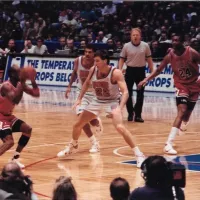
Basketball is a team sport played on a rectangular court...
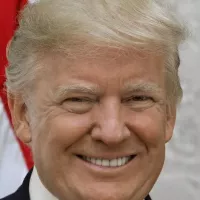
Donald John Trump is an American politician media personality and...
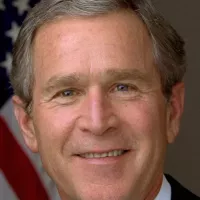
George W Bush the rd U S President - is...
The United States of America is a federal republic located...
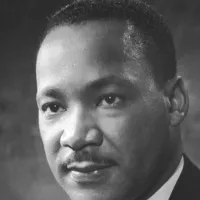
Martin Luther King Jr was a pivotal leader in the...
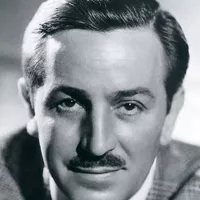
Walter Elias Disney was a highly influential American animator film...
Trending
15 days ago Mike Evans, McMillan, and Kancey Aim for Return Before Season's End

1 month ago Upstart's Q3 Earnings: Mixed Results, Soft Q4 Guidance, and Stock Slides After Announcement.

8 days ago Trump's performance at December 2025 Cabinet meeting raises concerns about his health and focus.
7 months ago Severe Thunderstorms Expected in Alabama: High Winds and Heavy Rainfall Possible
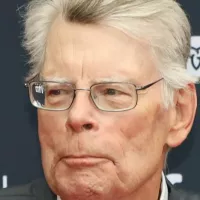
2 months ago HBO's 'Welcome to Derry': Stephen King Prequel, Pennywise Haunts, Questions Arise About Ruining Masterpiece
2 months ago Sleep Token Accused of IG Shutdown Over Tattoo Copyright: Artist Claims Label Involved
Popular

Candace Owens is an American conservative political commentator and author...
Matt and Ross Duffer known as the Duffer Brothers are...

Ilhan Omar is an American politician currently serving as the...

XXXTentacion born Jahseh Dwayne Ricardo Onfroy was a controversial yet...

Tom Cotton is an American politician and Army veteran currently...
The Kennedy Center Honors are annual awards recognizing individuals and...
